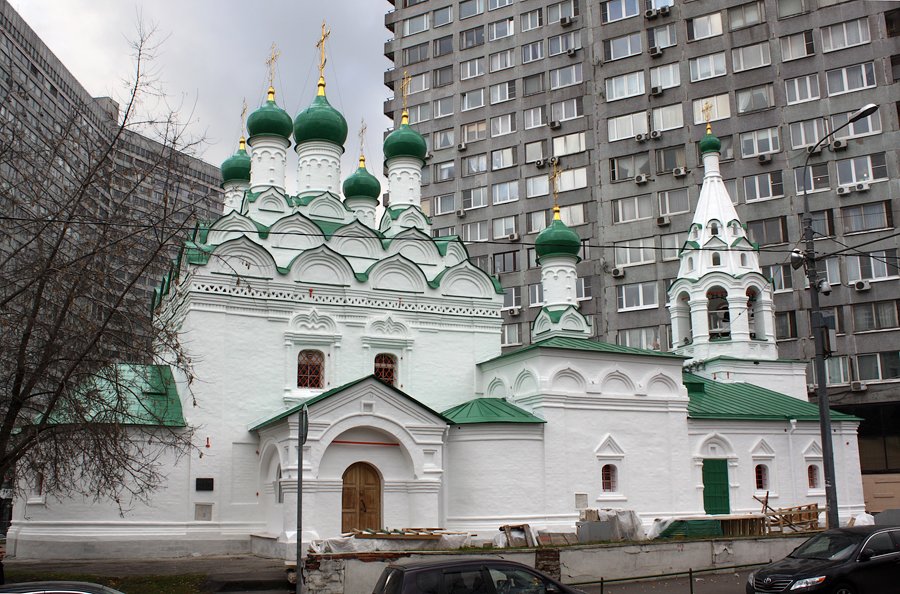Первое упоминание о церкви относится к 1625 году, но предполагается, что она возникла еще в конце XVI века. Скорее всего, ее посвящение связано с тем, что венчание Бориса Годунова на царство в 1598 году пришлось на день святого Симеона Столпника. В память об этом в Москве появилось две симеоновских церкви – одна за Яузой, а другая в Поварской слободе. Деревянное здание сгорело в Смутное время, но вскоре было заново отстроено. Каменный храм возведен на средства казны по указу царя Федора Алексеевича в 1676–1679 годах.
Структура церкви выполнена традиционно: шатровая колокольня с запада примыкает к широкой трапезной с двумя одноглавыми приделами, а с востока расположен четверик с тремя алтарными апсидами. Основная часть храма увенчала пятиглавием, покоящимся на горке кокошников. Внимание привлекает карниз: он выполнен из кирпичей, поставленных под углом друг к другу. В южной и северной стенах церкви сохранилось несколько белокаменных надгробных таблиц XVII–XVIII веков – напоминание о существовавшем здесь приходском кладбище.
После создания каменного храма Симеоновским стал только один из приделов в трапезной. Главный же престол храма был освящен в честь праздника Введения Пресвятой Богородицы во Храм. Еще один придел изначально был Никольским, а в 1759 году оказался переосвящен во имя святого Димитрия Ростовского.
Церковь известна как место венчания многих деятелей российской истории и культуры: в 1816 году здесь сочетались браком писатель С.Т. Аксаков и О.С. Заплатина, в 1866 году – будущий обер-прокурор Святейшего Синода К.П. Победоносцев (его дед был священником Симеоновского храма) и Е.А. Энгельгардт. Но самое известное венчание происходило здесь в 1801 году: в брак вступили граф Н.П. Шереметев и его крепостная, актриса П.И. Жемчугова-Ковалёва. Церемонию пришлось проводить тайно: молодые не желали скандала, связанного со столь «неравнородным браком», в среде российского дворянства.
Были у Симеоновской церкви и знаменитые прихожане. Прежде всего, Н.В. Гоголь: он жил в доме Толстых на Никитском бульваре и перед смертью в 1852 году его причащал настоятель храма. В деревянном доме, стоявшем с севера от церкви до 1960-х годов, проживал известный русский актер П.С. Мочалов. В 1829–1832 годах на Малой Молчановке вместе со своей бабушкой жил М.Ю. Лермонтов – в этом доме сегодня располагается музей.










%20BEL_0521.jpg&w=1920&q=75)





